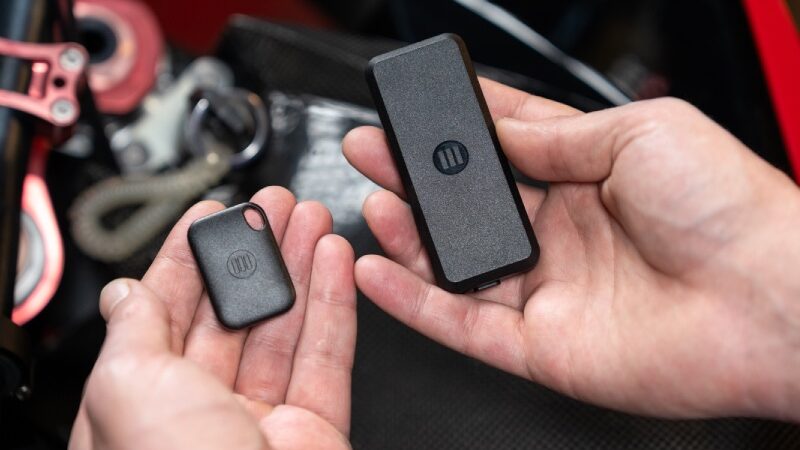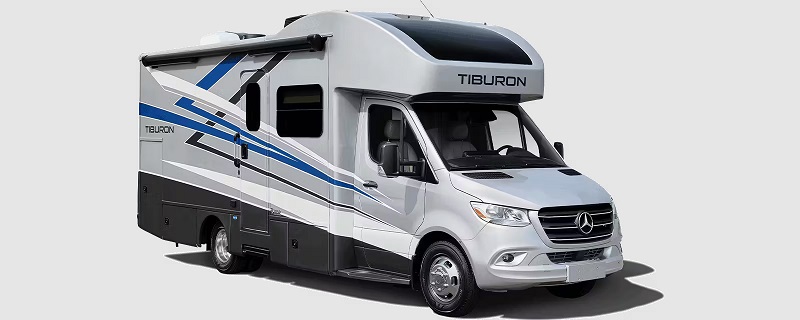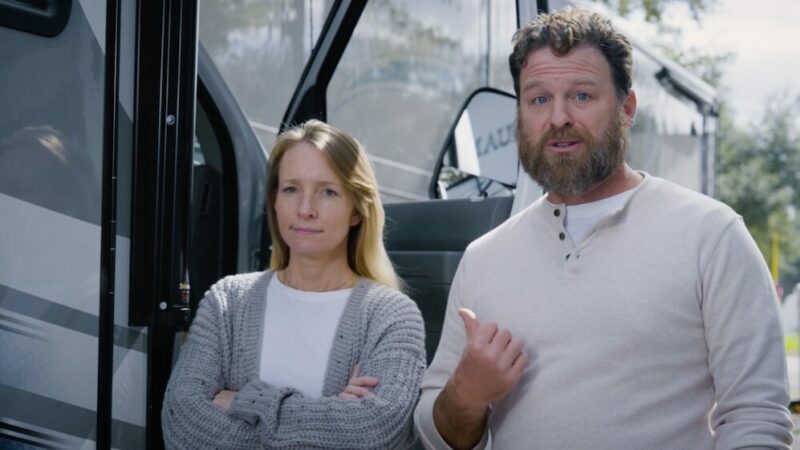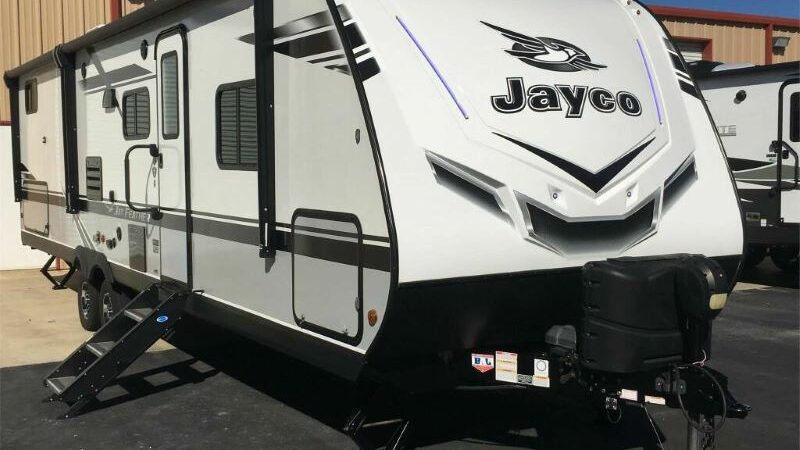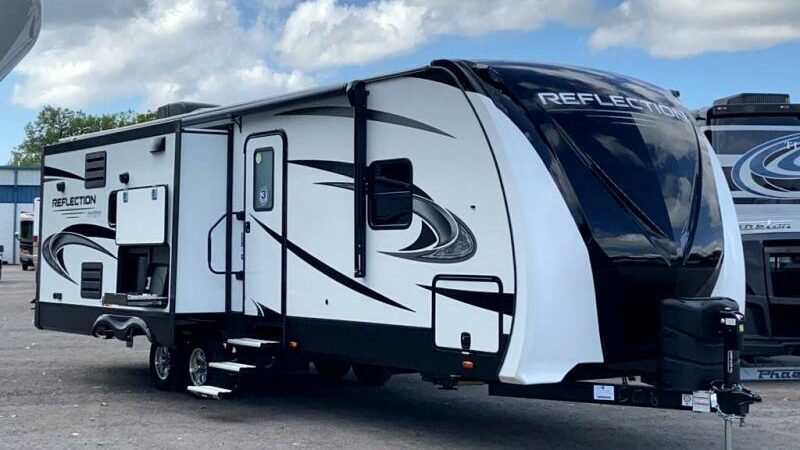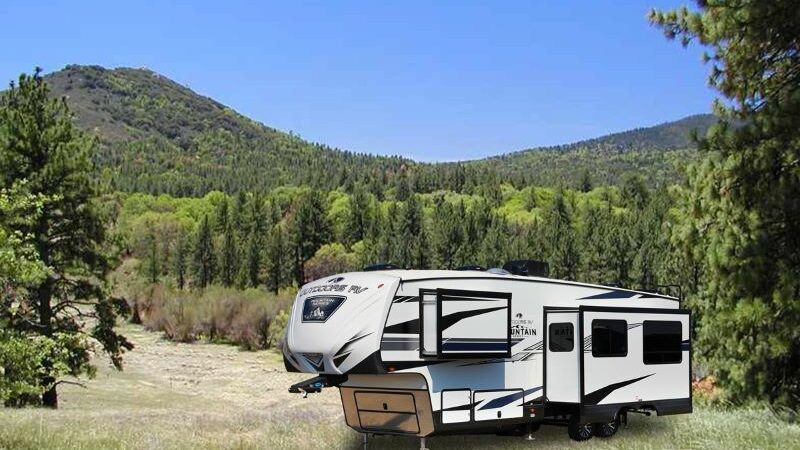Can You Take Your RV To Europe?
Thanks for your support! If you make a purchase using our links in this article, we may make a commission. And, as an Amazon Associate, I earn from qualifying purchases. See the full disclosure here.
A road trip across Europe is a dream for many. Rich in history, culture, art, and cuisine, it’s no wonder so many people vacation in countries across Europe. And if you’re an RVer, you might even wonder, can you take your RV to Europe for the ultimate European road trip?
In fact, it is possible, although it’s no small task. In this article, we’ll take a deep dive into what you need to do to take your RV to Europe, and everything you’ll need to know along the way.
Can You Take Your RV To Europe?
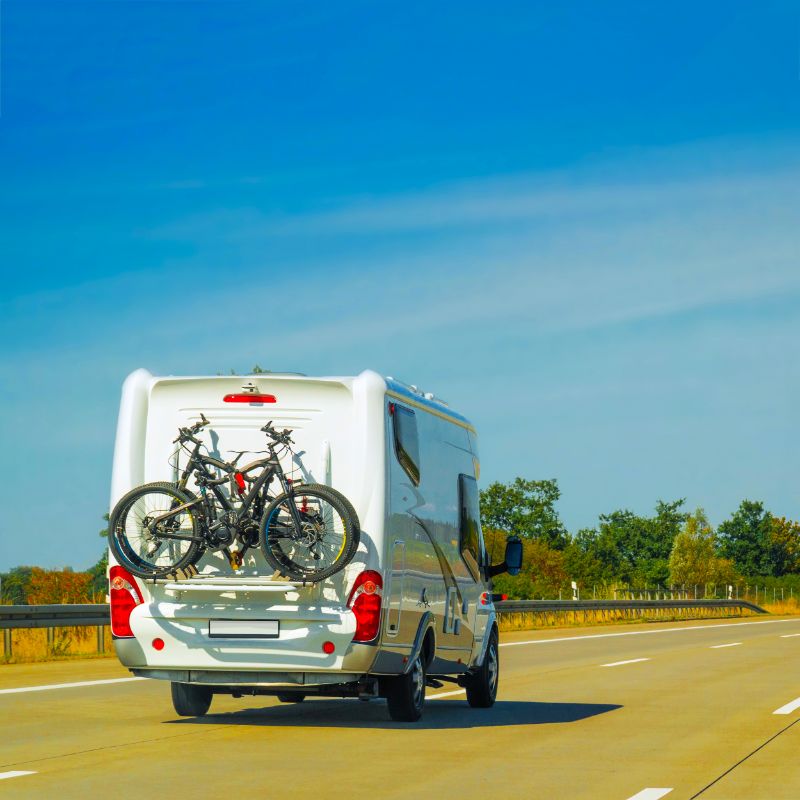
While you obviously can’t drive it there, it is possible to take your RV to Europe. The most common way to do so is to ship your RV by boat. Shipping vehicles overseas is fairly common, but it’s not cheap or simple to do so.
To get your RV to Europe, you’ll have to:
- Find an agent or broker that specializes in RV shipments, who will then help you select a shipping line
- Decide if you want to do Roll On, Roll Off (RORO, meaning you drive the RV on and off the boat) shipping or ship inside a container
- Decide which ports you’ll ship the RV to and from
- Pay various costs and fees for shipping
Due to all of this, if you’re not dead set on RVing around Europe in your current RV, you might be better served renting an RV. This won’t be cheap either, but it will likely be less of a hassle.
If you have a well-suited RV and plan on staying in Europe to explore for an extended time, shipping will be the only way. Working with a good broker and doing your research ahead of time will reduce stress and confusion.
How Much Does It Cost To Ship An RV To Europe?
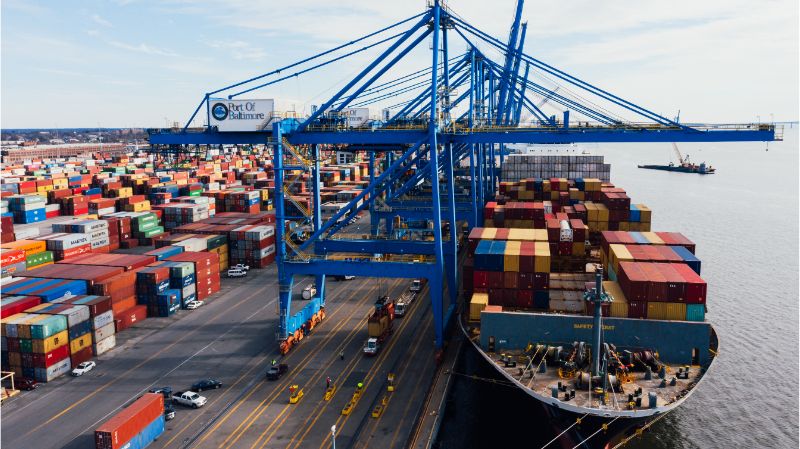
The exact costs to take your RV to Europe will vary widely based on a few different factors:
- The main factor is the size of your vehicle. Shipping costs are typically priced by cubic meter. So, the length times the width times the height of your vehicle in meters. Expect to spend $50+ for each cubic meter
- Weight can be a factor as well
- The exact ports you go in and out of and the distance traveled
- The value of your RV, which will affect insurance costs
- Whether you choose RORO or a container for shipment
- How quickly you need to get the RV there
All told, you can expect to pay a minimum of $2,000 to take your RV to Europe. Realistically, though, you’ll likely end up paying closer to $5,000, all told. It’s possible for the cost to get as high as $10,000 or more, including things like insurance.
Can You Use A US Driver’s License In Europe?
You can, in fact, drive in Europe (and in most countries) with your US driver’s license. However, if you’ll be there for more than 90 days, it’s recommended to get an international driving permit (IDP). This is because more European countries limit you to 90 days before you’ll need further documentation.
Of course, every country is different and has its own rules and regulations. Some, for example, will let you drive up to 6 months with foreign plates, while others may require you to get local plates much sooner. You should always be sure to check the specifics before you go.
What Is An International Drivers License?
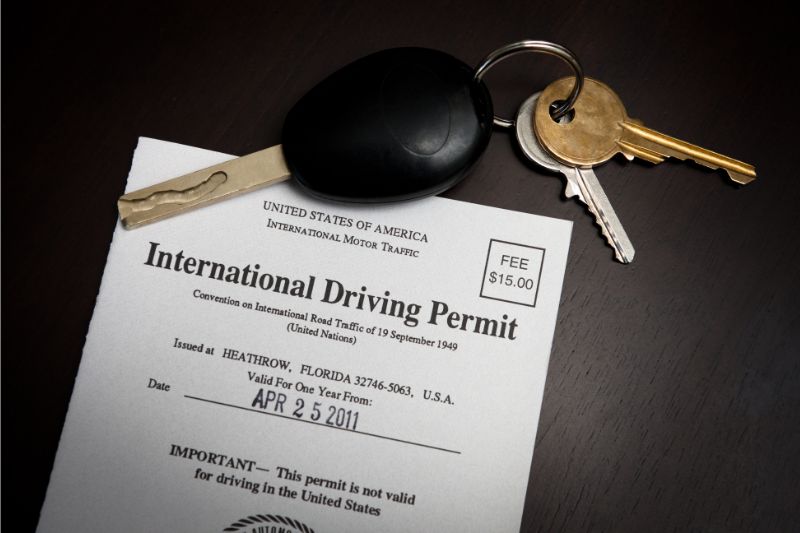
An international driver’s license refers to multiple different documents.
International Driver’s Licenses are, by and large, not widely recognized or very useful. They’re sold for anywhere from $25 to $100 and translate license info to other languages, but are unlikely to be accepted in most places you go.
The more useful document is an International Driver’s Permit (IDP). This is a document with your name, information, and photo that is treated as a valid form of identification in over 150 countries. It is not a substitute for your US driver’s license but rather a supplement to it, and as such, if your US license is suspended or revoked, your IDP won’t help you.
IDPs for those with US licenses are provided by only one organization: the American Automobile Association, better known as AAA. To get an IDP, you’ll need to pay $20, and provide 2 passport photos, and a photocopy of your US driver’s license.
Does Your Insurance Cover You In Europe?

While many auto insurance policies will cover you in the US and Canada, that coverage is unlikely to extend to Europe. You’ll need to get your own temporary insurance to be covered for your trip. Just like in the US, this is a requirement to be on the road legally.
Unlike in the US, insurance is usually per vehicle, rather than per person. So, as long as the vehicle is insured, anyone can drive it without issue.
You’ll need to find an insurance broker who specializes in insurance for US-plated cars unless you plan to stay long-term and register your RV in Europe (a process that is beyond the scope of this article. Two common options are Tour Insure and Thum Insurance.
Just like in the US, there are multiple levels of insurance, but we recommend comprehensive insurance. It’s more expensive, but the extra peace of mind for coverage is well worth it.
Your insurance will cover you across most of Europe, but some Eastern European countries may not be covered, so be sure to check when planning your trip. Coverage for your US-plated RV will be charged in increments of 30, 60, or 90 days.
The costs of insurance will vary wildly depending on your RV and its value, as well as the type of coverage you choose. A 6-month policy can cost anywhere from $3,000 to over $10,000.
Are There RV Parks In Europe?

While you won’t find any KOAs in Europe, they do indeed have RV parks. However, European RV parks are quite different from those in the US.
- European RV parks are rarely inside of cities or major population centers. Instead, they’re usually at least a half hour out from any city center and tend to be nestled into the wilderness. Expect something closer to a national park campground instead of a KOA.
- Because European RVs tend to be smaller, you may struggle to find accommodations with larger RVs, such as Class As.
- Free WiFi is not nearly as common and often requires you to get a temporary password that’s only good for an hour. In other cases, you may have to pay for WiFi.
- European RV parks are cheaper but also provide fewer amenities. In most cases, you’ll get little more than a place to set up camp, and perhaps an electrical hookup. Water hookups are rare, and dump stations are basically nonexistent.
Because of these differences, you’ll need to be prepared for a slightly different experience when you take your RV to Europe. That said, a campground is ultimately a place to rest and enjoy nature, and European campgrounds will absolutely provide you with that.
Where Is The Most Popular European RV Destination
With so many world-class destinations, it’s hard to name any one destination as the best or most popular place to take your RV in Europe. However, there are several spots we can recommend as among the best:
- Andalusia, Spain: Spain’s southernmost region provides a unique blend of European and Moorish cultures, with soaring cathedrals, ancient palaces, and incredible architecture.
- Transfăgărășan Highway, Romania: That’s “trans-fuh-gah-ra-shan” if you’re wondering. This iconic highway weaves through the gorgeous Făgăraș Mountains, providing unparalleled views of one of Europe’s most underrated destinations
- Romantic Road, Germany: Running between the towns of Würzburg and Füssen, this drive really lives up to its name with picturesque towns, vineyards, and castles straight out of your favorite fairy tale.
- Wild Atlantic Way, Ireland: This famous Irish drive spans from County Donegal to County Cork, showing off the best of Ireland’s West Coast, including the Cliffs of Moher and Kylemore Abbey.
- La Route Des Grande Alpes, Switzerland: The Swiss Alps are a legendary destination, and for good reason. This route passes through the world-famous Alps, showing off the beauty of the mountains with plenty of lovely Alpine villages to visit along the way.
Of course, this last only scratches the surface. With so many incredible sights to see, the possibilities for European RV destinations are endless.
Are RV Plugs The Same In Europe?
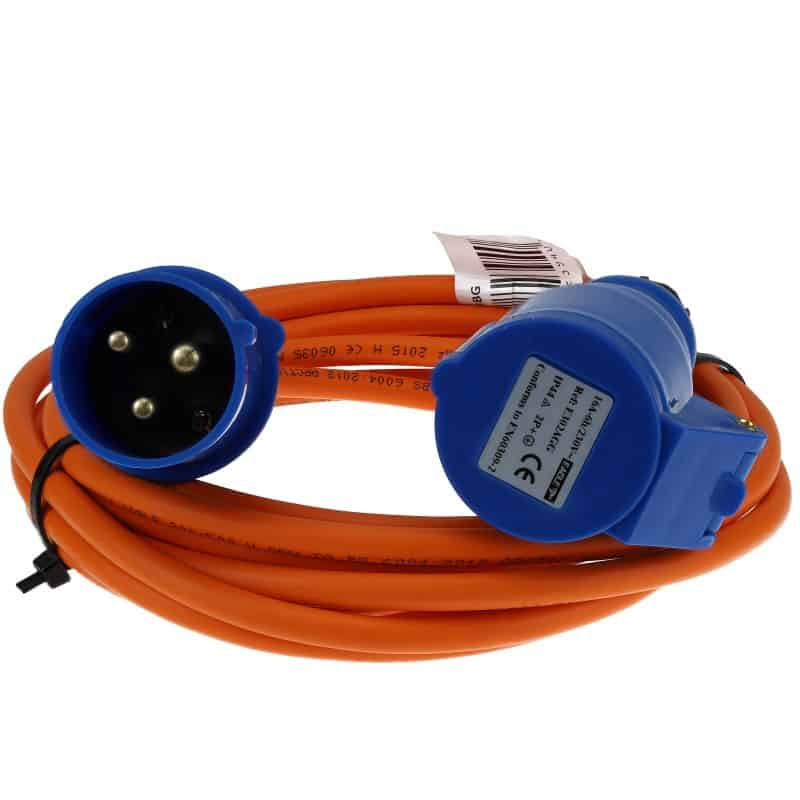
You might know that they use different electrical plugs for electronics in Europe, and the same is true of their RVs. In Europe RVs use CEE 17 plugs, also known as IEC 60309 plugs or IEC 309 plugs. These are similar to 30 and 50-amp plugs you find in the US.
If you want to take advantage of electrical hookups at your campground, you’ll need an adapter to do so. On top of this, Europe uses 230V power, whereas the US uses 110V. So, you’ll also need a step-down transformer to safely power your electronics off European power supplies.
Also, keep in mind that electrical hookups in Europe tend to have restricted supplies, so don’t expect to run everything in your RV at once.
While on the topic of hookups, propane fittings are also different in Europe and even vary from country to country. You’ll need an adapter to be able to hook up to propane as well.
Another thing to note on the topic of hookups: most European RVs have cassette toilets. Because of this, dump stations are somewhat rare. One option is to use a wheeled carry tank to empty your black tank, which can then be emptied into a receptacle for emptying cassette toilets.
In short, if you plan on taking your RV to Europe, do your research and be prepared with adaptors for all your connections.
Can You Sell An American RV In Europe?
Want to take an RV to Europe and then sell it there? It’s possible, but it isn’t a simple process.
To do so, you’ll have to handle a variety of paperwork and fees in order to legally import the vehicle. In fact, this isn’t unique to Europe and is the case in most countries. However, each country does things a little differently. So, you’ll have to do your own research on the country you plan to sell the RV.
Because of this, if you plan to sell an American RV in Europe, you should have all the details nailed down before you get there. That means knowing the laws and the paperwork and fees you’ll need, and if possible, having a buyer lined up before you leave.
The same goes for if you plan to go to Europe and buy an RV to tour around in. While it can be done, you won’t just be walking onto a car lot and driving away.
All countries have laws regarding buying and selling vehicles foreign vehicles and for foreigners buying vehicles in the country. You will want to be up to speed on the laws in the specific country you plan to visit and use a lawyer or broker where needed.
Is Taking Your RV To Europe Worth It?
So as we’ve seen, it’s no small task to take your RV to Europe. That said, if it’s your dream trip, it could indeed be well worth it.
However, you’ll need to consider the balance between costs and what you want to do. In some cases, you could pay $10,000 or more just to get your RV to Europe, and this is before the costs of the actual trip. So, be ready to do some serious bankrolling to make your dream trip happen.
Another option is to rent an RV in Europe. While this can also get costly over time, it’s likely to be more cost-effective (and simpler) than trying to bring your own RV over. On top of that, you’ll have a European RV made for European infrastructure.
That means an easier time navigating roads, using RV electronics without adapters, and not having to worry about emptying out a black tank with no dump stations nearby.
Another benefit is the availability of parts and trained technicians to deal with RV problems.
Final Thoughts About Taking An RV To Europe
So as you can see, it is possible to take your RV to Europe. But, doing so is neither simple nor cheap.
You’ll have to be prepared to fill out extensive paperwork, pay a variety of fees, and find an agent or broker to help you get the RV there. Once you’re there, you’ll also need insurance and potentially an international driver’s permit as well.
You can expect the whole process to cost upwards of $5,000. If all this seems like too much, you may want to consider renting an RV in Europe instead.
Once in Europe, there will also be some adjustments to make because of the different nature of RV life there. Electrical plugs are different, as is the voltage of the electricity. Dump stations are practically nonexistent at campgrounds.
And if you have a bigger rig, prepare to have some difficulty navigating roads that aren’t made for such large vehicles.
Of course, if taking your RV to Europe is truly your dream, then all this is absolutely worth the trouble. Once you get over the financial and logistical hurdles, you’ll be ready to make memories that will last a lifetime!
Related Reading:
– Drivable vs. Towable Rentals: Which Is Better?
– CoachLift: Making RVing Accessible For Everyone
– RV Trip Wizard vs. Roadtrippers: Which Trip Planner Is Best?
– Do Drivetime Calculators Really Work?
Ryan Milejczak – Author and Part-Time RVer
Ryan Milejczak (mill-LAY-check) is a full-time freelancer writer and Florida native with a passion for RVs.
Ryan has been writing about RVing and sustainable living for the past 3 years while traveling.
Currently, he’s saving up to do his own camper van conversion, which he plans to take across the US and Mexico.
When he’s not writing, Ryan loves cooking, hiking, practicing his Spanish, and taking care of his plants (currently at 23 plants and counting!)

Source: https://rvblogger.com/blog/can-you-take-your-rv-to-europe/

